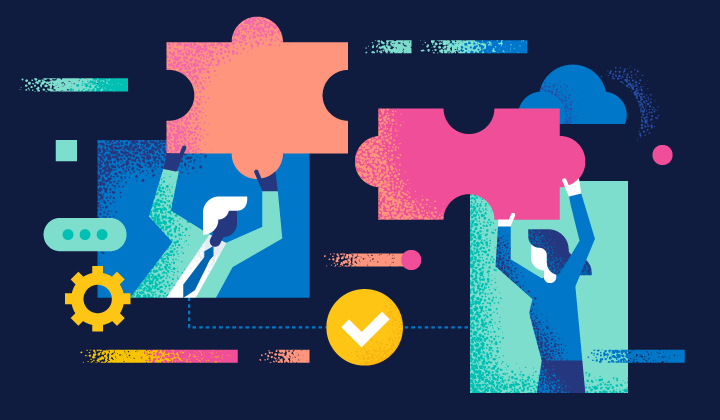Diverse teams yield better results — Here’s how to build them

Products and services need to be designed to be globally relevant and accessible. How can companies ensure this? By intentionally building and fostering diverse teams.
Diverse teams include a wide range of people with differing perspectives in every stage of development — and it’s these varying viewpoints that make diverse teams so crucial.
As a globally diverse and distributed company, Elastic needs to reflect that identity in its employees, says Rebecca Harris, director of DEI at Elastic.
“Everyone having a seat at the table is so important,” she says. “Diverse teams don’t just benefit the company that fosters them. Individuals on diverse teams are exposed to new ideas and ways of thinking. It’s a learning opportunity and a chance to build better interpersonal relationships.”
“It’s easier to work on a team where everyone thinks the same,” Rebecca says. “But you’re not going to get the best results. If you’re doing a project and you always go to the same person and they agree with you, you’re never looking at the problem differently.”
Jasprit Panaich, senior manager, site reliability engineering, is also a big proponent of diversity among teams. When Jasprit moved into leadership and management, she noticed she was often the only woman in the room. To change that, she’s invested in learning how to coach for excellence and mentor other women in tech.
“Diverse teams bring a range of perspectives together and facilitate an output of that,” she says. “They have a greater impact on customers. And through diversity, you get innovation. You end up with a stronger result.”
Build a diverse team
To build a diverse team, start by looking at what elements of diversity are missing on your current team.
“As a hiring manager, it’s important to look at the makeup of my team,” Rebecca says.
What skills, backgrounds, and experiences are represented? Does your team reflect a rich mix of them, including gender, ethnic, or cultural backgrounds? If not, hiring managers need to expand outside of their usual networks to fill those gaps in diversity.
“Think differently about how you source,” Rebecca says. “Step outside of your inner circle. Don’t just go to the same places you typically source from to find talent.”
It’s easy to hire from your industry network, university, or former companies. But to build a team with true diversity you need to go outside of that. Leveraging connections and referrals from Employee Resource Groups (ERGs) and niche or speciality networks are great places to start.
Leave the role open for longer to allow a bigger pool of candidates, Jasprit says. “Instead of just filling the opening immediately, find the best person for your role.”
Foster a diverse team
Once you’ve taken the steps to build a diverse team, it’s important to continue to foster that diversity.
“The reality is it’s hard work to add more perspectives,” Rebecca says. “You need to be willing to challenge the status quo. Adaptability and flexibility are required for high-functioning diverse teams.”
Companies and teams need to create an environment that is trusting and inclusive, so employees feel comfortable speaking up or disagreeing. Employees need to feel seen, heard, and valued, Rebecca says. “Diversity won’t thrive if we bring people in and then the team isn’t willing to adapt and change to welcome those new perspectives.”
Rebecca also included that in order to start creating an inclusive environment, teams should invest in the basics and align on norms and ground rules. Have conversations to better understand different communication styles and ways of working, role expectations, and the team’s goals.“These basic check-in and alignment exercises cost you four to five hours but can save you six months,” Jasprit says.
Team alignment is especially important for remote, distributed teams. Working across time zones and cultures, teams need to be transparent and share feedback in a kind and direct way, Rebecca says.
“Teammates need to hold each other accountable to show up inclusively,” she says. “That’s the environment we need to be effective.”
Interested in joining a company that celebrates diversity? Check out open roles.
Elastic, Elasticsearch and associated marks are trademarks, logos or registered trademarks of Elasticsearch N.V. in the United States and other countries. All other company and product names are trademarks, logos or registered trademarks of their respective owners.

